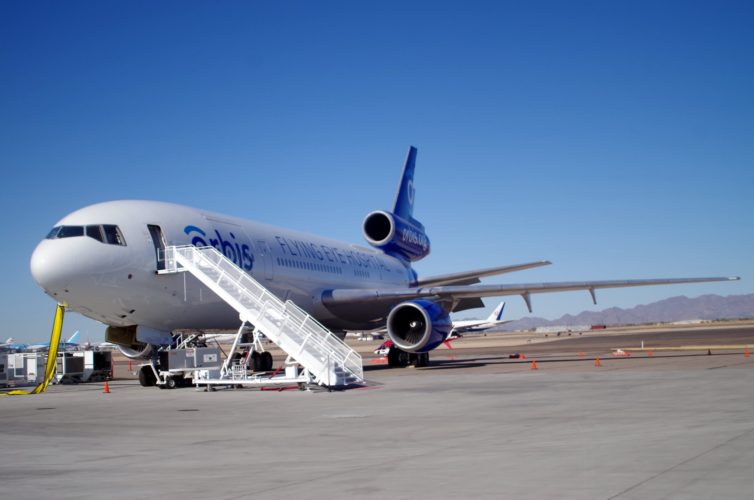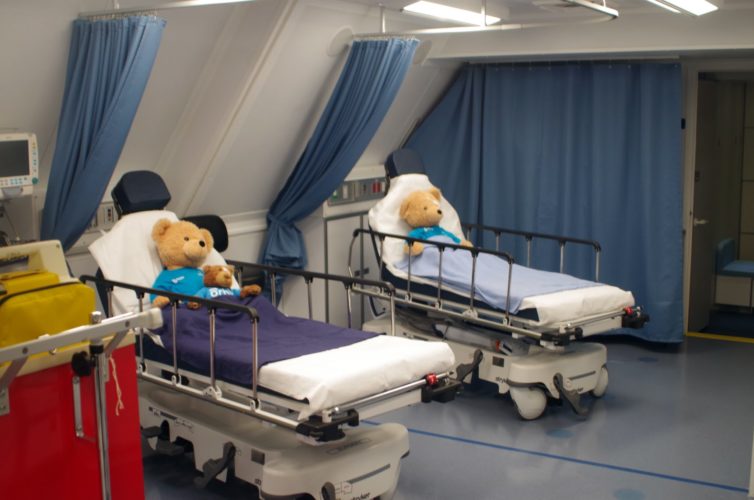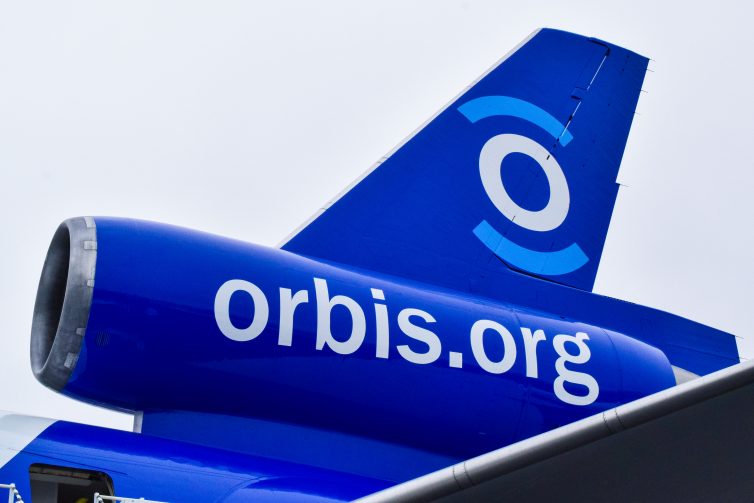
A ground crew member’s view of the Orbis Flying Eye Hospital. – Photo: Justin Schmid | AirlineReporter
Part of what fascinates me when I visit an airport is wondering where the aircraft have been. Look up a tail number for any commercial aircraft, on a site like FlightRadar24, and you’ll find a long list of destinations. For widebody aircraft, those destinations get noticeably more far-flung. While many aircraft have a rich history, few have made an impact like the MD-10 known as N330AU – also known as the Orbis Flying Eye Hospital. This is not just any ‘ol commercial or cargo aircraft, it provides some very special services.

The inside of the Orbis Eye Hospital is “bearly” recognizable as an MD-11. – Photo: Justin Schmid | AirlineReporter
Val Suberg, Orbis’ senior manager of aircraft maintenance, can prove that point with just one story about two sisters from Ethiopia. They were blind as a result of pediatric cataracts, which would be a simple surgery in many countries. The sisters, though, had traveled to Addis Ababa and found out that the hospital there only served adults. A member of the hospital staff told them that the Orbis Flying Eye Hospital would arrive in a few weeks, and that they could treat the sisters. They waited in Addis Ababa and were selected for surgery. They got to see each other for the first time, and were eventually able to attend college. Now that is a special plane, with some VIP crew!

Engine No. 2/vertical stabilizer (“the tail”) of the Orbis MD-10-30F Flying Eye Hospital (N330AU) – Photo: John Nguyen | AirlineReporter
On June 2, Orbis International launched their new, third-generation “Flying Eye Hospital” on board a converted MD-10-30F donated by FedEx. Orbis is a non-profit non-governmental organization (NGO) that aims to provide advanced eye care and medical training to communities throughout the world without access to such facilities, technology, and expertise… literally bringing the hospital to patients and caregivers who need it the most.
I was invited aboard for a special private tour to see this mobile hospital for myself and learn about more its history, design, and purpose, and I created a short video slideshow of highlights…

FedEx’s first Boeing 767. Image: Boeing.
FedEx Express (redundant, right?) is the air freight branch of the shipping and delivery giant, operating a massive fleet of airliners. These include DC-10s (also referred to as MD-10s), MD-11s, 777Fs, and now, their brand-new Boeing 767-300F. At a fleet count of over 300 ’œmainline’ aircraft (those narrow and wide-bodies not operated by feeders), how big is FedEx as an airline? Bigger than British Airways, Lufthansa, Emirates, ANA, Qantas, or US Airways. With a 50-plane backlog on the 767-300F, FedEx is taking drastic steps to modernize their fleet in the name of fuel efficiency and reliability.
The years of experience Boeing has in building and refining the 767 line has resulted in an airframe that satisfies the cargo mission very effectively. The 767-300F is based upon the 767-300ER passenger variant, with its upsized range, MTOW, and fuel capacity. FedEx expects a 30% fuel burn reduction compared to the DC/MD-10 models the 767-300F is replacing.



